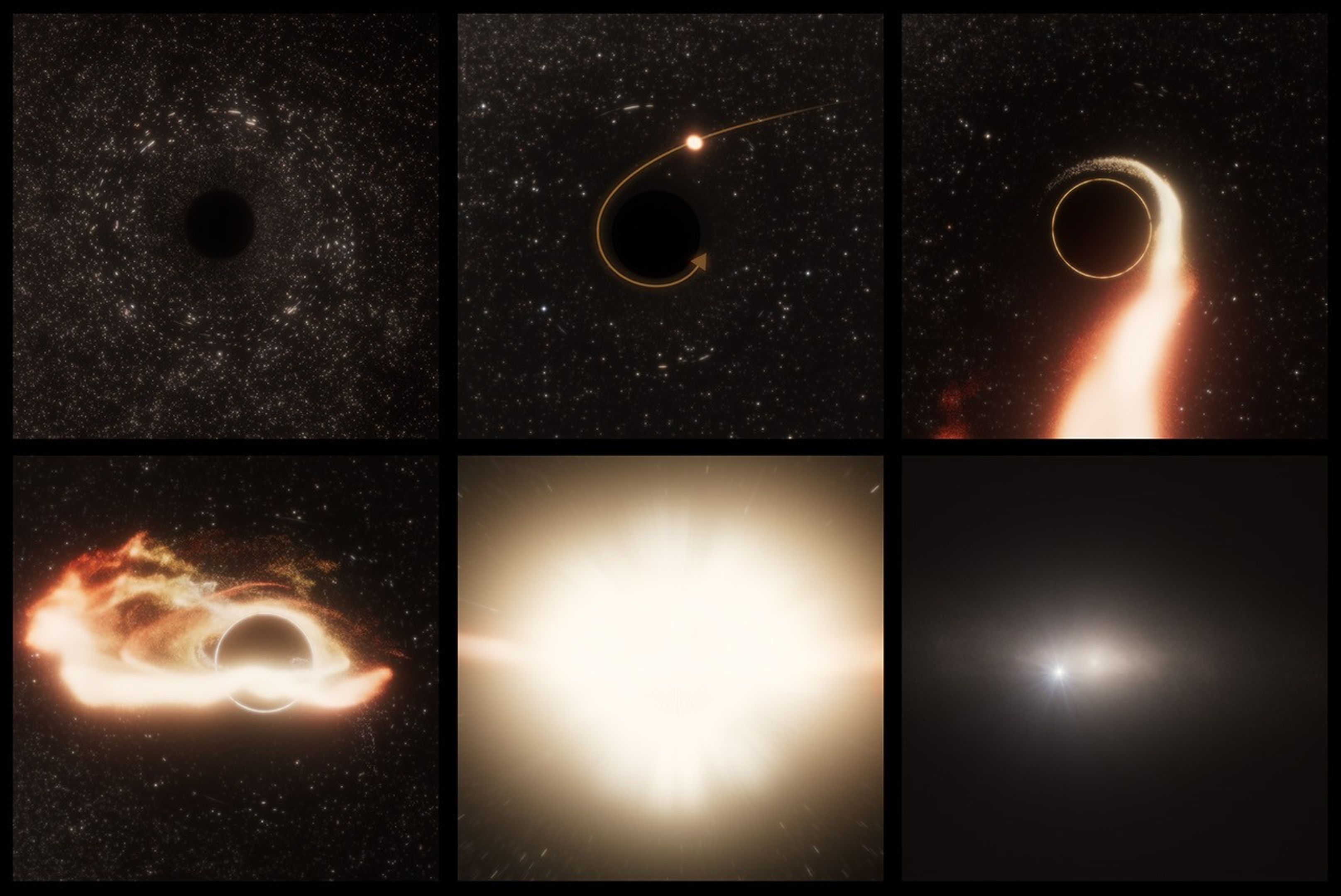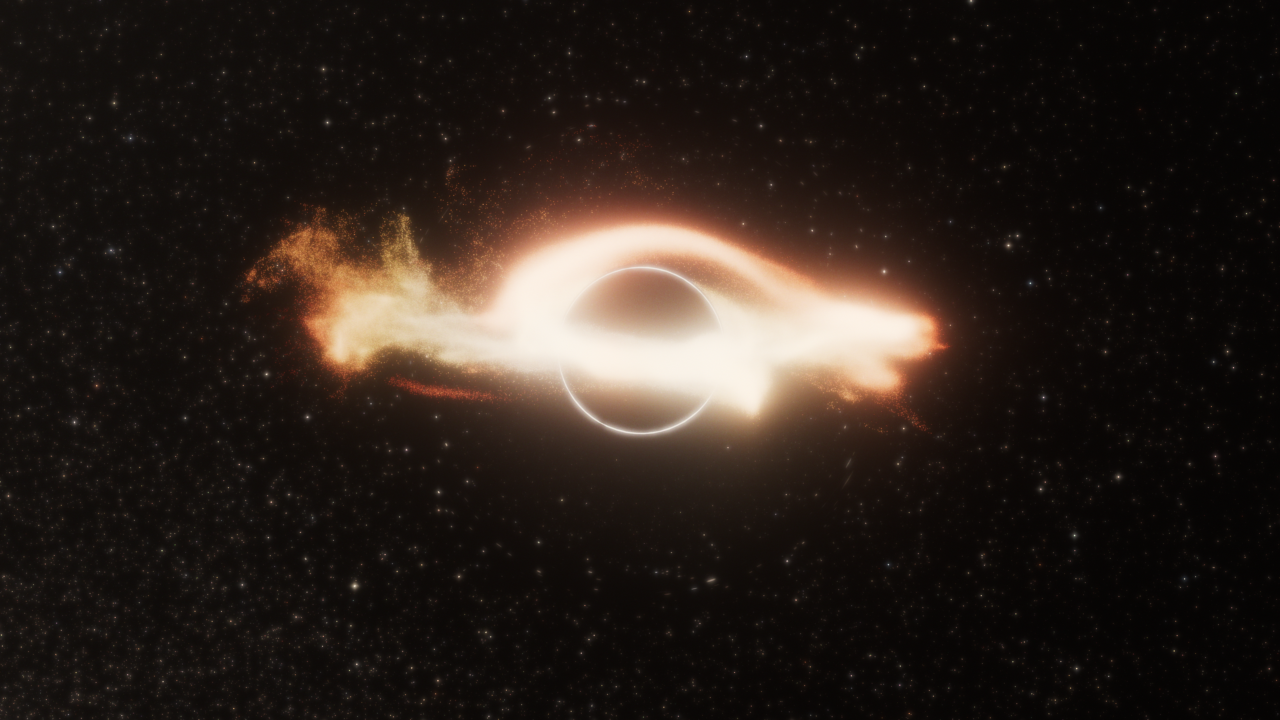1 min read
Black Hole TDE AT2024tvd Compass Image

This is a combined Hubble Space Telescope/Chandra X-Ray Observatory image of a distant galaxy that is host to the telltale signature of a roaming supermassive black hole. Both telescopes caught a tidal disruption event (TDE), an intense flash of radiation caused by the supermassive black hole eating a star. The TDE appears as an isolated blue-white point source of ultraviolet light, while the galaxy is colored orange in visible light. In addition, Chandra captured X-ray light as a blue haze that surrounds the TDE. Both Hubble and Chandra observations were combined to pinpoint the TDE's location, which is offset from the center of the galaxy, which appears as a bright orange-white blob.
The image shows a scale bar, compass arrows, and color key for reference.
The scale bar is labeled in light-years along the top, which is the distance that light travels in one Earth-year. (It takes three years for light to travel a distance equal to the length of the scale bar.) One light-year is equal to about 5.88 trillion miles or 9.46 trillion kilometers.
The scale bar is also labeled in arcseconds, which is a measure of angular distance on the sky. One arcsecond is equal to an angular measurement of 1/3600 of one degree. There are 60 arcminutes in a degree and 60 arcseconds in an arcminute. (The full Moon has an angular diameter of about 30 arcminutes.) The actual size of an object that covers one arcsecond on the sky depends on its distance from the telescope.
The north and east compass arrows show the orientation of the image on the sky. Note that the relationship between north and east on the sky (as seen from below) is flipped relative to direction arrows on a map of the ground (as seen from above).
This image shows visible wavelengths of light that have been translated into visible-light colors. The color key shows which [instrument] filters were used when collecting the light. The color of each filter name is the visible-light color used to represent the light that passes through that filter.
About the Object
- R.A. PositionR.A. PositionRight ascension – analogous to longitude – is one component of an object's position.17:10:42.58
- Dec. PositionDec. PositionDeclination – analogous to latitude – is one component of an object's position.+28:50:15.13
- ConstellationConstellationOne of 88 recognized regions of the celestial sphere in which the object appears.Hercules
- Object NameObject NameA name or catalog number that astronomers use to identify an astronomical object.AT2024tvd
- Object DescriptionObject DescriptionThe type of astronomical object.Black Hole Tidal Disruption Event
- Release DateMay 8, 2025
- Science ReleaseNASA’s Hubble Pinpoints Roaming Massive Black Hole
- CreditScience: NASA, ESA, STScI, Yuhan Yao (UC Berkeley); Image Processing: Joseph DePasquale (STScI)
Related Images & Videos
Share
Details
Claire Andreoli
NASA’s Goddard Space Flight Center
Greenbelt, Maryland
claire.andreoli@nasa.gov
































